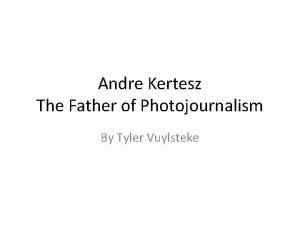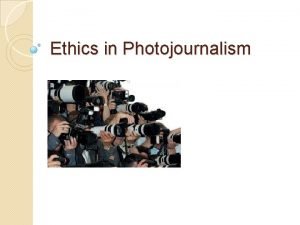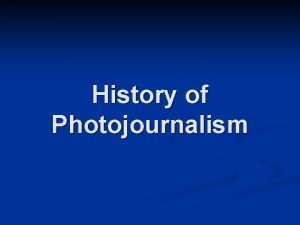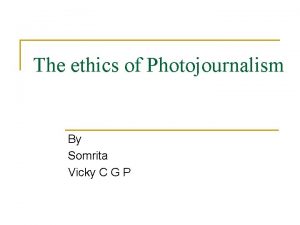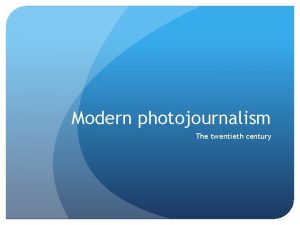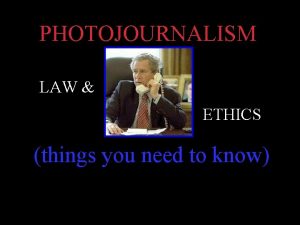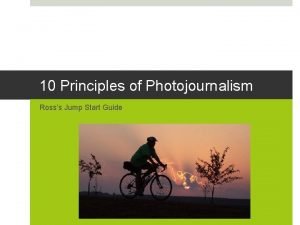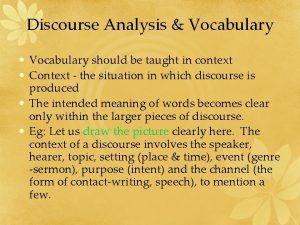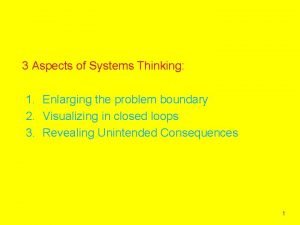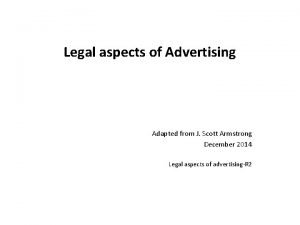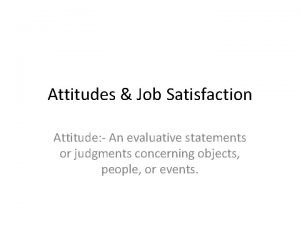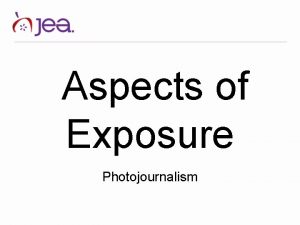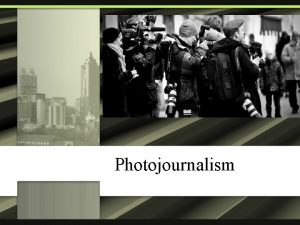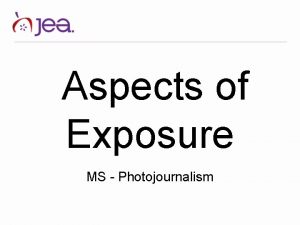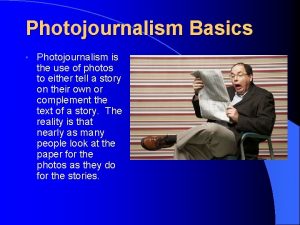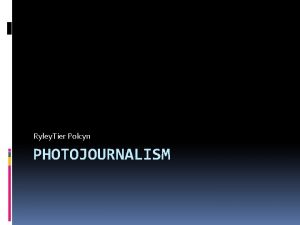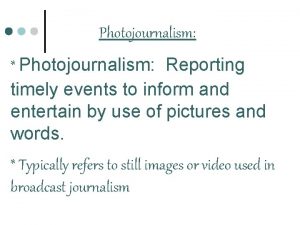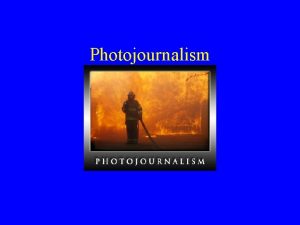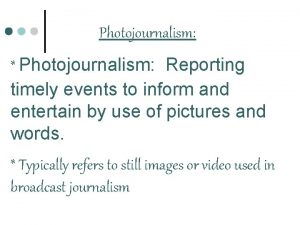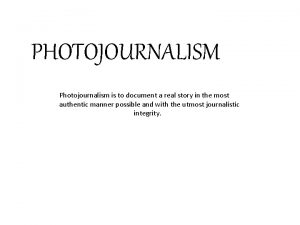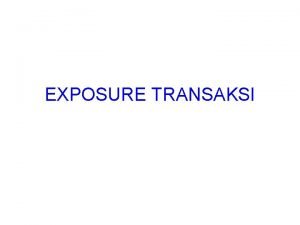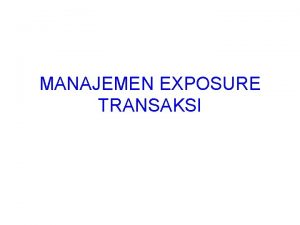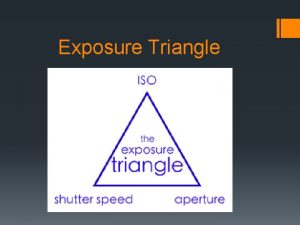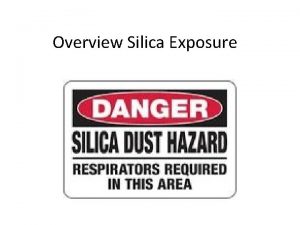Aspects of Exposure JEA Photojournalism Curriculum What is
































- Slides: 32

Aspects of Exposure JEA Photojournalism Curriculum

What is exposure? Refers to the general term for the amount of light that reaches the lens, as measured by other exposure settings. Many cameras can manually adjust exposure independently of other settings like shutter speed and aperture.

Shutter Speed

What is shutter speed? Refers to the speed at which the shutter opens and closes. This controls the length of time that light is available to the camera as it takes the picture.

How is shutter speed measured? Shutter speed is measured in fractions of a second. 1 - one full second 1/80 (or “ 80”) - one eightieth of a second 1/100 (or “ 100”)- one-hundredth of a second 1/400 (or “ 400”)- one four-hundredth of a second

For instance. . . A picture taken with “ 1” shutter speed allows light into the camera for a full second. BUT A picture taken with “ 400” shutter speed allows light into the camera for a very tiny amount of time.

What does that mean? The longer the exposure, the brighter the image. AND A fast shutter speed gives you a crisp, clear image. A slow shutter speed starts to blur anything that is moving.

When should I adjust shutter speed? 1) To capture motion. Freeze motion with a fast shutter speed Blur motion with a slow shutter speed 2) To adjust light. NOTE: only do this when nothing in your picture is moving!

Why should I adjust shutter speed? It creates some cool effects! Bushra Ghafoor, R. B. Hayes High School

How can I adjust shutter speed? 1. Set your camera to Shutter Speed priority. “Tv” on Canon, Pentax, and Leica b. “S” on everything else a. 1. From there, adjust using a scroll button on the camera.

Potential Problems Slow shutter speeds pick up more movement, even a slight shake of your hand. Use a tripod to fix this problem!

Shutter Speed Examples Slowest Fastest Notice how the water blends together Notice how you can see individual drops of water

Shutter Speed Examples (at night) Notice how the faster shutter speed (1/30 th of a second) lets in less light, creating a more precise image but a darker one. The faster shutter speeds are brighter but blur the movement and the light.

ISO

What is ISO? Refers to a camera’s sensitivity to light. This controls how much your camera naturally adjusts for a lack of light in situations. NOTE: On film cameras, ISO referred to the “speed” of the film you bought.

How is ISO measured? ISO typically comes in one of the following measurements: 100 200 400 800 1600 3200

What does that mean? The lower the number, the less sensitive the camera’s sensor will be to natural light. AND The higher the number, the more sensitive the camera’s sensor will be to natural light.

For instance. . . An ISO of 100 or 200 should be used for daylight or bright light situations WHEREAS Darker scenes and indoor pictures should use a higher speed.

When should I adjust ISO? If you are taking pictures in low light situations and your photos are too dark, try bumping up the ISO. Good for: -gymnasiums -concerts & “no flash” performances -art galleries

Why should I adjust ISO? It adjusts for dark situations without using flash! Bryant High School Publications

How can I adjust ISO? ISO is located in a different place on each type of camera. On most cameras, ISO can be adjusted in every photo setting (including “auto”). Check your camera manual to find it.

Potential Problems As you increase your ISO, your photos will get brighter. . . BUT they will also get grainier. It’s a good idea to take the photos using the lowest ISO possible that still gets you a light enough shot.

Aperture

What is aperture? Refers to the amount of light that enters the eye of the camera. THINK of aperture like the pupil of your eye: your pupil gets bigger and smaller based on the light that is available, and aperture does that to the camera’s “eye” as well.

What does that mean? The larger the “eye, ” the more light that the camera will let in. The smaller the “eye, ” the less light the camera will let in.

How is aperture measured? By the size of the “eye” in the lens, called “f stops” Here’s where it gets confusing: The bigger the aperture hole opening, the more light comes in, which gives a smaller f-stop number

For instance. . . Smaller f-stop numbers, like 1. 4 and 1. 8, actually mean a larger “eye” in the lens and more light. Bigger f-stop numbers, like 6, mean a smaller “eye” in the lens and less light.

Why should I adjust aperture? Adjusting aperture controls the depth of field, or how much of the picture is in focus. A higher f-stop (like 6) will make the entire photo in focus, giving you a wide or deep depth of field A lower f-stop (like 1. 8) will make only part of the photo in focus, giving you a shallower depth of field

When should I adjust aperture? Adjust aperture when you only want part of the photo to be in focus. For instance: busy backgrounds portraits

How can I adjust aperture? 1. Set your camera to Aperture priority. “Av” on Canon b. “A” on pretty much everything else a. 1. From there, adjust using a scroll button on the camera.

Potential Problems The lens quality limits how much you can adjust aperture, and lens that allow f-stops are expensive! Very high f-stops (8 and up) often require a slower shutter speed, so you may need a tripod to prevent shakiness.

Aperture Examples Top left: Notice how lower aperture creates a smaller depth of field. The front swing is in focus but the other swings are somewhat blurry. Bottom right: The higher aperture creates a greater depth of field, meaning that the entire photo is sharp and precise.
 Jea septic tank phase out
Jea septic tank phase out Managing economic exposure and translation exposure
Managing economic exposure and translation exposure Managing economic exposure and translation exposure
Managing economic exposure and translation exposure Operating exposure vs transaction exposure
Operating exposure vs transaction exposure Transaction exposure vs economic exposure
Transaction exposure vs economic exposure Tyler andre nude
Tyler andre nude Photojournalism job
Photojournalism job What is the difference between essay and composition
What is the difference between essay and composition Photojournalism rules
Photojournalism rules What is photojournalism
What is photojournalism History of photojournalism
History of photojournalism Photojournalism job
Photojournalism job Nppa code of ethics
Nppa code of ethics Cutlines for photos
Cutlines for photos Modern photojournalism
Modern photojournalism Laws of photojournalism
Laws of photojournalism Principles of photojournalism
Principles of photojournalism Additional aspects of aqueous equilibria
Additional aspects of aqueous equilibria Psycholinguistic aspects of interlanguage
Psycholinguistic aspects of interlanguage Health aspects of family planning
Health aspects of family planning Elements of a setting
Elements of a setting Textual aspects of lexical competence
Textual aspects of lexical competence Characteristics of the victorian novel
Characteristics of the victorian novel Medicolegal importance of pregnancy
Medicolegal importance of pregnancy Satvital
Satvital 6075 meaning
6075 meaning Words about language lesson 1 answers
Words about language lesson 1 answers Cultural aspects
Cultural aspects Felix longoria
Felix longoria Systems thinking aspects
Systems thinking aspects Legal aspects of advertising
Legal aspects of advertising Chapter 18 visual merchandising and display
Chapter 18 visual merchandising and display Major job attitudes
Major job attitudes





